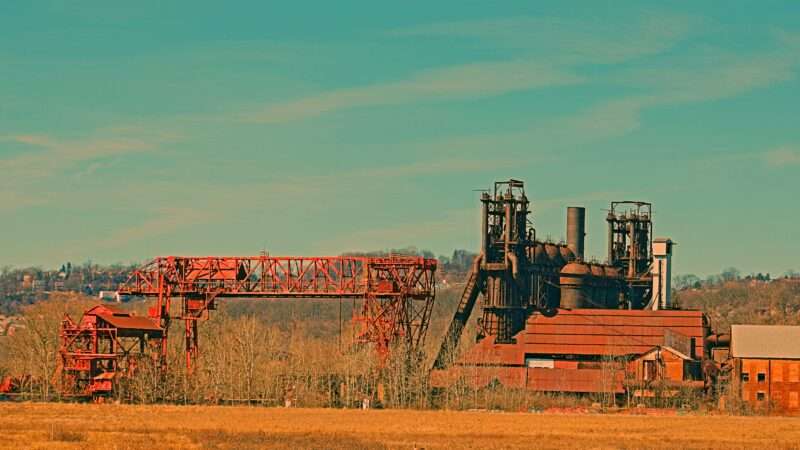
Former President Donald Trump's decision to impose huge new tariffs on imported steel came with an explicit promise about resurrecting the American steel industry.
"We're bringing it all back," Trump told reporters in May 2018 as he ordered the placement of 25 percent tariffs on nearly all steel imported into the United States. In exchange for making steel prices "a little bit more expensive," Trump believed the tariffs would boost domestic production "like it used to be in the old days when we actually had steel," he said in August of that same year. And when campaigning for reelection a year later, he was eager to claim credit for taking the steel industry from "dead" to "thriving."
But nearly six years after those tariffs were announced, government data show that America's annual steel output has fallen below the level recorded in 2017—the last full year before Trump's tariffs were imposed.
America produced 80 million metric tons of raw steel in 2023, according to new data from the U.S. Geological Survey (USGS), which tracks the annual output of iron, steel, and other industrial commodities. That's down from 80.5 million metric tons of steel produced in 2022.
Both figures ring in below the 81.6 million metric tons that were poured out of American steel mills in 2017.
The USGS data show that Trump's tariffs may have helped goose domestic steel production in the first few years after they were implemented. Production rose to 86.6 million metric tons in 2018 and 87.8 million metric tons in 2019, before cratering in 2020 as a result of the COVID-19 pandemic. Production bounced back in 2021, as American steel mills produced 85.8 million metric tons of raw steel that year.
Those modest gains in the immediate aftermath of the tariffs seem to have faded away over the past two years—despite President Joe Biden's unwillingness to remove the Trump tariffs, which have hammered steel-consuming industries and have added to inflation.
That pattern—a short-term boost in production followed by a decline later—is exactly what economists would expect to happen after tariffs are imposed, wrote Ed Gresser, a former assistant U.S. trade representative and vice president and director for trade and global markets at the Progressive Policy Institute.
Gresser noted that large new tariffs typically create a four-stage chain of events: First, an increase in prices; then, a shift toward domestic production as buyers try to avoid paying the new tax; next, a decline in consumption by domestic industries that consume the tariffed product as they fall behind competitors elsewhere in the world; and finally, that decline in domestic demand rebounds onto the protected producers who see fewer orders for their products—in this case, steel.
When the Commerce Department formally announced Trump's tariffs in 2018, it waved away concerns about the last step in that process.
"If a reduction in imports can be combined with an increase in domestic steel demand" that would result from military and infrastructure spending, then the Trump tariffs "will enable U.S. steel mills to increase operations significantly in the short-term and improve the financial viability of the industry over the long-term," the department predicted.
That plainly hasn't happened. The short-term boost provided by the tariffs has faded and the artificially higher price of steel that American industries (and consumers) now must pay appears to be sapping demand for steel.
The two-year decline in steel output (during a period of robust economic growth, too) makes it easy to assess the Trump steel tariffs as their sixth birthday approaches. There is no need to weigh the benefits of the tariffs against their costs—even though the costs overwhelm the benefits—and no need to be distracted by the theoretical debates about how tariffs supposedly improve American national security.
Tariffs were supposed to resurrect the steel industry. Instead, America now produces less steel than it did before the tariffs were imposed. The debate is over. Trump's steel tariffs have failed.
The post American Steel Production Has Fallen to Pre-Tariff Levels appeared first on Reason.com.







